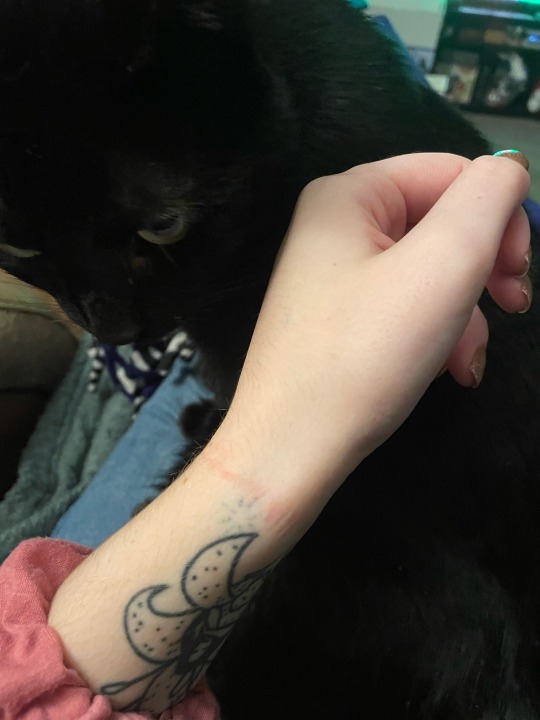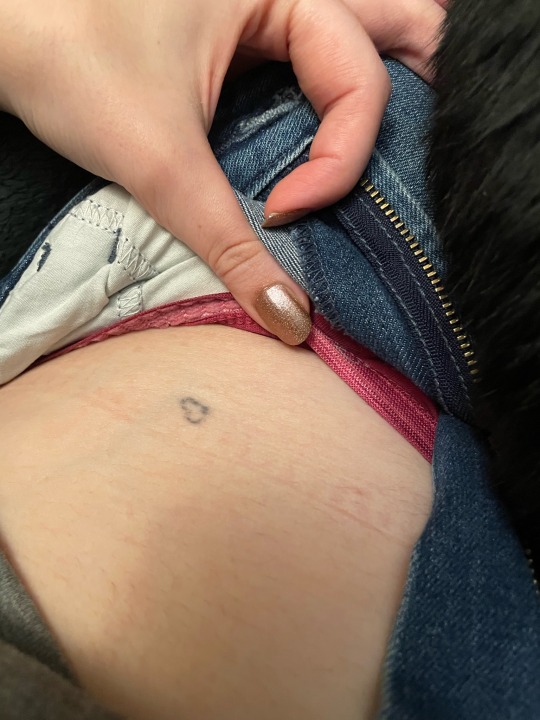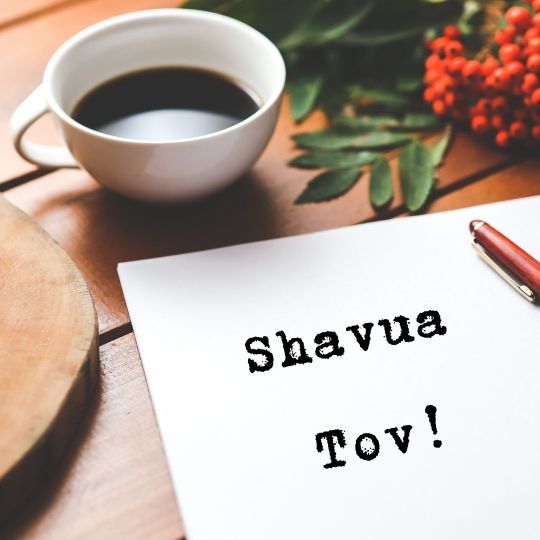#latorah
Explore tagged Tumblr posts
Note
I AM HERE TO COMMENCE BOTHERATIONS WITH THE ASK THING. 3, 12, 28, 62 :3c
HI BABY! Bother away, hot stuff ❤️🔥
3. How many tattoos I have and what they are:
You’re gonna wanna sit down for this. I brought pictures for show and tell, instead of taking up this post with a big buncha text. And tumblr wouldn’t let me post all of my tats, so I made a collages 🖼️
So I’ve got 14 tattoos not including the stick and pokes I did at 16 🙈 but if we’re counting the stick and pokes, then 17. If we’re counting the stick and pokes I never finished, then 18. There’s a weird little blue line on my hand because of that 💀
A lot of these are self explanatory, but some aren’t. That little guy is Joel Miller as an action figure 🥰 those two cats in the heart portrait are my little fur babies. That lady underneath them is Amy Winehouse which, fun fact, I’ve had that tattoo for three years and only realized a few weeks ago that her shoulder is fucked up! Amy had the horseshoe tattoo on her left shoulder, not her right! But I don’t mind. Next to her is a thieving cat. Guess my inspiration.





These last three are stick n pokes I did, apart from the last one done by my best friend at 16. So that’s a star on my wrist, then a heart (?) on my hip, last one is a stack of X’s on my side. Pardon the boob. And the bra marks.
12. Idea of a perfect date.
I make my very special homemade whirly pop popcorn and binge watch a show with my partner. Usually always sunny or sopranos lately. After that, we get high, then fuck, then snack, and fall asleep to YouTube 💕 I know, boring. I’m a total hermit. But sometimes we do antiquing dates or get tattoos together and I like those too!
28. Favorite ice cream?
Lately it’s been those strawberry ice cream bars. Mmm. Sometimes butter pecan, I had a delicious lemon poppy seed ice cream over the summer too!
62. Have you ever felt an earthquake?
No! I’m not near any major fault lines. The worst we get is severe snow and ice storms, sometimes tornadoes in the spring. I like to chase them in my Chevy HHR.
8 notes
·
View notes
Text
tfw shower thoughts happen during services
I accidentally wrote an entire dvar Torah during shul yesterday and the only appropriate place I could think of to share was here, on Tumblr, so here I've come to share it.
There is no one type of Jew. In fact if anyone tells you there is you can immediately discount whatever they're saying, because they've already proven their ignorance. We can't even agree on how to categorize and group ourselves; the only common denominator among Jews is we worship the One G-d, Unique in His Oneness. Everything else depends on circumstances.
There's a common Jewish joke to this effect: "Two Jews, three opinions." I rather think our history of debate is one of our great strengths - it forms the basis of our quintessential and almost instantly recognizable learning style. We sit in pairs or groups with a holy book on the table between us and read it aloud... And we argue over what exactly, precisely, the author meant. What did he mean by this word, this phrase, this parallel structure, this reference? What can we learn from the text to apply to our daily lives?
Jewish study halls are loud.
And believe me, they're not necessarily polite, either. Some full-time scholars treat arguing like a beloved hobby. The magnum opus of the Jewish academic world, the Talmud, contains the collected opinions of the greatest ancient sages, written down when the chain of oral transmission was threatened. To our great fortune, they also preserved the lively discussion (source) and passionate name-calling that came with it: "empty-headed", "scatterbrained", even "a first-born son of Satan" come up more than once. (Source) They insulted each other, each other's wives, each other's entire generations to prove a point.
So how do we resolve these conflicts? How does the study hall ring in harmony, rather than strife?
The answer lies in another Jewish maxim (we love our proverbs):
שבעים פנים לתורה / Shiv'im panim la-Torah. / There are seventy faces to the Torah.
Biblical context: The Torah refers to 70 languages, 70 nations, and means "all the people in the world." So when we say there are 70 faces to the Torah, we leapfrog off that concept and say "The Torah encompasses all possible permutations and interpretations in the world." (Recall the scene in Fiddler on the Roof where someone says, "They can't both be right!" and Tevye responds, "You know, you're also right..." Source.)
The Talmud is a unified text because the sages recorded in it were debating toward a common goal. Their opinions may have been equally valid (peep the story of Rav Eliezer vs the majority, source), but at the end of the day they agreed on a deciding factor and made a final decision. The study hall rings in harmony because we argue and debate not toward a common goal but for a common purpose: to increase our knowledge and understanding, and to deepen our love and relationship with G-d. With this as our guiding principle, differences of individual interpretation melt under the overriding truth that all are facets of G-d's World.
How does this apply to us? Let me make this very, very Jewish and end with a parable.
So, nu, you're sitting in the study hall and your partner has just spent the last twenty minutes trying to explain a fakakta idea and you KNOW he's meshugana but you don't have time to reason with him because the rabbi just hammered on his desk to call for the afternoon prayer service. You take a deep breath and remember - shivim panim laTorah. He can keep his ideas, and maybe next time it'll be your turn to rant, because the Word of G-d is infinite and encompasses all interpretations.
And another:
You stand with the prayerbook in your hands and stare at the paragraphs written by sages hundreds and thousands of years ago and you struggle to relate to the words, even though your teachers and rabbis have lectured about how meaningful they are over and over again. You take a deep breath and remember - shivim panim laTorah. These words were codified with a particular set of meanings in mind, but you have a unique relationship with G-d. You can use these words OR their original intention to inspire your own, private prayer, and it is equally valid. Because the Word of G-d is infinite, and encompasses all possible permutations of prayer.
70 whole and unique faces to the Word of G-d.
Whether you're in the midst of an emotional crisis, a spiritual crisis, an existential crisis, or a motivational crisis, may each of us merit to see the conflict we are feeling, and find a new face to study instead.
#Tl;dr: Don't let conflict get you down... G-d encompasses all possible interpretations#This was supposed to be short and pithy#inspiration#love thy neighbor#love thyself#Judaism#philosophy#wellll it depends#first post#If a Jew is stranded on a desert island for ten years he builds two temples: the one he attends and the one he wouldn't step foot in#jumblr
6 notes
·
View notes
Text
shivim panim latorah is '2 jews 3 opinions' cooler older sister
5 notes
·
View notes
Text

#shavua tov#torah#blogger#jumblr#haveablessedday#have a nice week#thanks to the lord#shalom#simchat torah#latorah esvida#barujhashem#baruchhashem#elohim
7 notes
·
View notes
Note
Can you explain what Aliyah is?
Hi there!
Thanks for writing to me!.
Aliya comes from the Hebrew root ayin-lamed-hey (ע–ל–ה) and it literally means ‘going up’ or ‘ascending.’ When you are reading the Tanakh (the Hebrew Bible) or speaking in modern Hebrew, usually this is what this term means.
The term used in this form can have one of two additional meanings depending on context. In a Synagogue setting, an ‘aliyah’ is an honor (literally ‘going up’ to the bima or the Torah itself) given to a congregant. In regard to the modern State of Israel, when someone makes ‘aliyah’ to Israel, they are immigrating back home (or literally, ‘going up’ to the Land of Israel).
I hope that this helps!
PJ
48 notes
·
View notes
Text
¿Qué es kabbalah?
¿Esta dentro de los parámetros bíblicos?
Creada desde la antigüedad por Abraham (el hebreo) el padre de la fe.
Diseño de espiritualidad aceptable para todos sin perder su esencia.
Libros que usan como base es el Zohar, la Biblia (laTorah), Sefer Yetzira entre otros.
La palabra kabbalah viene de la palabra hebrea 'lekabel' que significa recibir.
*Recibir la tradición
*El estudio del todo. Lo que podemos percibir y lo que no podemos tocar.
*Ciencia que estudia el infinito, el universo
RECUERDA: Usted esta aqui con rl proposito de añadir valor al mundo y esto empieza adquiriendo conocimiento.

6 notes
·
View notes
Text
The fact that learning full time, while single or married, is a tremendous zechus, and that it says in the Torah - in Chazal, Shulchan Aruch, Poskim, and everywhere else - that it is not only "not disrespectful" to take money for doing so, but a tremendous benefit and very very positive thing for the one learning, the one giving the money, and the whole world as well, is not something that is "extremely right wing" at all, but rather Basic Judaism, which they would teach in all the schools from right to left, except for the fact that in certain places Torah values are not politically correct and assimilation has replaced Torah values with those of the Goyim, leading to the absurd notion that Yissachar - all the Yissachars throughout the generations - are "shnorors", chas v'sholom.
Please understand that such talk, and such a mindset is a denigration of our Torah, and G-d Himself, Who values learning so highly.
First, please see Shulchan Aruch Hilchos Talmud Torah 246:21, and especially the Shach there.
But besides that, please explain to me why Torah is less valued than anything else in the world where philanthropy is considered a positive thing? Why, if I am a cancer researcher, can I collect money from individuals and foundations to further my research, and that would be considered a wonderful thing, but for Torah learning I suddenly become a shnorror?
Imagine a medical researcher who could accomplish great things in his field, but says "I don’t want people to spend their hard earned money on my research?" Or, "I think it’s disrespectful to do so?"
Obviously someone like that either doesn’t have much to offer for his donors, or he has no inkling of the value of his work.
So too someone who considers that great merit of supporting Torah in that light. They have not the slightest inkling of the value of learning Torah.
And if a researcher says, "I want to be serious about my research, but I'd rather be independent and only look for the cure to cancer one of 2 hours a day", he is not breaking any laws, but clearly, his determination to find that cure is not the same as someone who dedicates his life and all his time to it, even if it means - and it invariably does - living off grants.
Torah learning is not merely some nice adornment to the Jewish home. Torah - all of it - needs to be known, understood, and learned by every Jew. All of it.
And although the Torah's obligation is to do not more than establish times in the day and night for learning, the torah's opportunity is much more than that.
Again, you’re not breaking any laws by NOT finding the cure to cancer.
But it is a pity if you think its "disrespectful" to allow people to support your research. Or that you are a "shnoror" if you do.
The real shonorors in the world are those who do not learn Torah and therefore mooch their life and off of those who do; who do not contribute to the sustaining of the world - including the curing and preventing of diseases, world peace, health, happiness, and all blessings in the world - but rather rely on those toiling in the Bais Hamedrash to do their work for them.
But the fact that Torah is what supplies the energy that sustains the world is NOT the best reason to learn. That’s all called shelo lishmah. The real reason we should learn is because G-d values our learning so highly. The fact that the world lives off of it is just a fringe benefit.
Life is not about avoiding violations in halachah - it is about reaching your spiritual potential. We do not live life according to our obligations but according to our opportunities. Such an attitude is like saying, as your life's goal, that you want to "Live within the framework of the law."
Um, yes, but what do you want to do with your life????
According to the halachah, you are altogether entitled to marry a working boy, who is koveah itim latorah in the morning and evening. No question about that.
But to call "shnorors" those who choose a holier path, who want to avail themselves of the opportunity to learn all day, to refuse to recognize the superiority of the other path, the path of those who want to accomplish much much more than you can accomplish in merely a few hours, is to not understand what Torah is.
And just as bad, you are also denying the great zechus of the parents who support that Torah - they are not, chas v'sholom being disrespected, and they are not tossing a few coins to a shnorror - theirs is the glory of the man who sponsored the research that finally discovered the cure for cancer. They will go down in history - in G-d's history books - as glorious, famous, and successful. Biographies will be written about such parents in Olam Habah, who supported their children's learning. And if it was hard for them to do so, then that will just make the biography more awesome.
But there is no halachic obligation to be spiritually rich and famous. You can, of course, live a non-criminal life without success, glory, fame and fortune.
In this world, all that fame and fortune is nothing but vanity. In the next world, though, all the fame and fortune and happiness and pleasure is real.
And one word of Torah earns you more of it than an entire lifetime of doing Mitzvos (Yerushalmi Peah 1).
0 notes
Video
youtube
Sissu Vesimchu - Simchat Torah - Jewish Music
Yahshua est juif et le Peuple d’Elohim est composé des Juifs (Olivier franc) et des Gentils (Olivier sauvage), les derniers venant se greffer sur les premiers.
“ Vous adorez ce que vous ne connaissez pas; nous, nous adorons ce que nous connaissons, car le salut vient des Juifs. “ (Jean 4:22)
Hebrew :
Sisu vesimchu Besimchat torah Ut'nu kavod latorah
English :
Rejoice and be joyous On Simchat Torah And honour the Torah.
Peinture d'Alex Levin

1 note
·
View note
Note
Great bc what I'd dean and Cas danced in Aaron's bar mitzvah party (sometimes there's a party as well as Aliyah latorah) and then Aaron joined and at some point they started a relationship, all three of the:)
That’s adorable!
4 notes
·
View notes
Text
PURIM Y KI TISA
bs'd Shalom.Buenas noticias! Estoy abriendo un ciclo de videos en Inglés con consejos prácticos para controlar la ira, basado en mi libro 'Healing Anger' (Curando la Ira). Este es el link para el video https://youtu.be/WNv_9VOtri4 Este es el link para el libro en Feldheim publishers http://www.feldheim.com/healing-anger.html Si deseas adquirir el libro en Israel contactame. Siéntete libre de reenviar este ensayo a cualquier otro correligionario. Disfrutalo, Purim Sameaj y Shabat Shalom. PURIM Y KI TISA - Dinero en Llamas La Torá nos dice en la parashá de esta semana (Shemot 30:13): 'Esto lo darán todos los que pasen por el recuento, desde los veinte años en adelante, medio shekel de la moneda sagrada del shekel, el shekel que pesa veinte gera, un medio shekel como un regalo para Hashem ". Rashi explica el comienzo del verso, 'Esto se dará': Él [Di-s] le mostró [a Moshe] la forma de una moneda de fuego y su peso era medio siclo, y le dijo: 'da así'. . Di-s le ordena a Moshé que instruya a la gente en la mitzvá de Majatzit Hashekel; donar medio shekel para el Mishkán que le otorgaría al pueblo judío expiación por el pecado del becerro de oro. El Midrash Tanjuma nos dice que Di-s produjo una moneda de medio shekel debajo de Su Trono de Gloria, mostrándole a Moshe su tamaño y forma. Moshe tenía dificultades para imaginar exactamente cómo debería ser el medio Shekel, por lo tanto, Hashem le mostró una imagen de la moneda. Una situación similar tuvo lugar cuando Moshe tuvo dificultades para imaginarse la Menora, por lo tanto, Di-s le mostró su imagen en fuego. Es comprensible que Moshe tuviera dificultades para visualizar la Menora, ya que su diseño era muy complicado. Sin embargo, ¿por qué fue tan difícil para Moshe visualizar el diseño simple de una moneda? Además, ¿cuál es el significado del hecho de que la moneda fue hecha de fuego? Rav Zalman Sorotzkin zt "l ofrece una respuesta fascinante, derej drush [1], en su comentario sobre el Chumash [2]. Él explica que cuando Chazal dice que a Moshe le resultó difícil imaginar la moneda, no se refieren a su apariencia física. Moshe tuvo grandes dificultades para entender cómo una moneda, que representa dinero, podría servir como expiación. En las palabras de la conocida frase: "El dinero es muchas veces la raíz de todo mal". Esto puede ser una exageración, pero es cierto que el dinero a menudo se utiliza de manera perjudicial y es la fuente de muchos rasgos negativos como la codicia y los celos. En consecuencia, Moshe quería saber cómo algo que es la causa de tanto mal y problemas sirve para acercar al hombre a Su Creador. Di-s le respondió mostrándole una imagen de una moneda hecha de fuego. El fuego es un ejemplo clásico en el mundo físico de algo que puede hacer un bien tremendo o causar un gran dolor y destrucción. El fuego ha matado a innumerables personas y causado un daño incalculable. Pero al mismo tiempo, ha permitido a los seres humanos sobrevivir en el clima frío, como iluminación y para hacer comida. Hashem le dijo a Moshé que el dinero en el sentido espiritual es como el fuego en el sentido físico. El dinero puede ser espiritualmente perjudicial. Sin embargo, también puede elevarse para ser un Jeftsa Shel Mitzva, un elemento que se usa para una Mitzva. Una persona puede dar caridad para ayudar a los pobres, los enfermos y los huérfanos con su dinero y mejorar en gran medida las vidas de las personas. Se necesita dinero para apoyar el aprendizaje de la Torá y pagar por Bate Midrashim y Bate Knessiot. En el caso del Majatzit Hashekel, el dinero estaba siendo utilizado para las Mitzvot pertenecientes al Mishkan; un uso tan sagrado del dinero, de hecho, merecía servir como expiación por los pecados del pueblo judío. Una lección similar puede derivarse de un episodio en Megilat Esther. Hamán ofreció a Ajashverosh diez mil kikar de plata a cambio de permiso para exterminar al pueblo judío en Adar [3]. En ese verso, la Gemara cita a Resh Lakish, quien dice que Di-s sabía que Amán ofrecería este dinero por el derecho a matar a los judíos. Por lo tanto, Hashem precedió el dinero de Hamán con el dinero del pueblo judío en la forma del Majaztit Hashekel que donarían cada año [4]. La explicación simple de este Guemará es que Hamán estaba usando el dinero para un mal propósito, pero el pueblo judío contrarrestó el efecto del dinero de Hamán a través del hecho de que usaron el dinero para hacer mitzvot. El ejemplo de Majatzit Hashekel nos enseña el enfoque correcto sobre el dinero; como una forma de cumplir con la gran Mitzva de Tzedaka, ayudar a otros y hacer buenas obras. La preocupación de Moshe Rabenu sobre el uso negativo del dinero también sirve para recordarnos los posibles efectos negativos del dinero. Que todos tengamos el mérito de usar el dinero solo para el bien. ____________________________________ [1] Esto significa que no es la simple comprensión conocida como pshat, sino que es una explicación homilética. [2] Oznayaim LaTorah 30:13, citado por Rav Yissajar Frand. [3] Meguilat Ester 3:9. [4] Yerushalmi Megila 13b.
Le Iluy Nishmat Eliahu ben Simja, Perla bat Simja,Yitzchak ben Perla, Shlomo Moshe ben Abraham, Elimelej David ben Jaya Bayla, Abraham Meir ben Lea, Gil ben Abraham. Zivug agun para Marielle Gabriela bat Gila, Yehudit bat Malka. Refua Shelema de Naftali Dovid ben Naomi Tzipora, Yehuda ben Simja, Yaacob ben Miriam, Dvir ben Lea, Rujama Noa bat Batsheva Devora, Menajem Jaim ben Malka, Shlomo ben Sara y Dovid Yehoshua ben Leba Malka. Exito y parnasa tova de Daniel ben Mazal Tov, Debora Leah Bat Henshe Rajel,Shmuel ben Mazal Tov y Yosef ben Sara.
0 notes
Note
BUG BIRTHDAY??????????? BLESSÈD ANNIVERSARY OF YOUR EXPULSION FROM THE WOMB! May you experience ✨joyful frivolity✨ on this day~
It’s a bug birthday indeed 🥰🐛 thank you for celebrating with me!!! I love you, Dare ❤️❤️❤️

3 notes
·
View notes
Text
PURIM AND KI TISA
bs'd
Shalom. Great news!
l'm putting out a weekly video clip of 4-5 minutes sharing tips with practical advice on how to conquer anger, based on my book 'Healing Anger'. This is the link https://www.youtube.com/watch?v=1ReRCucJ2E8
The link for my book to Feldheim Publishers is
http://www.feldheim.com/healing-anger.html
If you want to buy it from me (hard copy) in Israel let me know.
Feel free to forward these words of Torah to any other fellow Jew. Enjoy it, Purim Sameach and Shabbat Shalom.
PURIM AND KI TISA – Money on Fire
The Torah tells us in this week's parsha (Shemot 30:13): 'This shall be given by everyone who passes through the counting, from twenty years old and up, a half-shekel from the holy shekel coin, the shekel weighing twenty gera, a half-shekel as a gift to HaShem."
Rashi explains the beginning of the verse, 'This shall be given': He [G-d] showed him [Moshe] the form of a coin of fire and its weight was half a Shekel, and He said to him, ‘give like this’.
Hashem commands Moshe to instruct the people in the Mitzva of Machatzit Hashekel – to donate half a Shekel towards the Mishkan that would earn the Jewish People atonement for the sin of the Golden Calf. The Midrash Tanchuma tells us that G-d produced a half-shekel coin from under His Throne of Glory, demonstrating to Moshe its size and shape. Moshe had difficulty envisioning exactly what the half-Shekel should look like, therefore Hashem showed him an image of the coin. A similar situation took place when Moshe had a hard time to picture the Menora, therefore G-d showed him its image of fire.
It is understandable that Moshe had difficulty in visualizing the Menorah as its design was very complicated. However, why was it so hard for Moshe to visualize the simple design of a coin?! Moreover, what is the significance of the fact that the coin was made out of fire?
Rav Zalman Sorotzkin zt”l offers a fascinating answer, derech drush [1], in his commentary on the Chumash[2]. He explains that when Chazal say that Moshe found it difficult to envisage the coin, they do not refer to its physical appearance. Moshe had great difficulty understanding how a coin, representing money, could serve as an atonement. In the words of the well-known phrase: ‘Money is many times the root of all evil’. This may be an exaggeration but it is certainly true that money is often used in harmful ways and is the source of many negative traits such as greed and jealousy. Accordingly, Moshe wanted to khow could something that is the cause of so much evil and trouble serve to bring man closer to His Maker?
G-d answered him by showing him an image of a coin made of fire. Fire is a classic example in the physical world of something that can do tremendous good or cause great pain and destruction. Fire has killed untold numbers of people and caused inestimable damage. But at the same time, it has enabled human beings to survive in the cold weather, as illumination and to make food. Hashem said to Moshe that money in the spiritual sense is just like fire in the physical sense. Money can indeed be spiritually detrimental. However, it can also be elevated to be a Cheftsa Shel Mitzva –an item that is used for a Mitzva. A person can give charity to help the poor, the sick and orphans with his money and greatly enhance people’s lives. Money is needed to support Torah learning, and pay for Batte Midrash and Batte Knessiot. In the case of the Machatzit Hashekel, the money was being used for the Mitzvot pertaining to the Mishkan; such a holy use of money did indeed merit to serve as an atonement for the Jewish people’s sins.
A similar lesson can be derived from one episode in Megillat Esther. Haman offered Achashverosh ten thousand kikar of silver in exchange for permission to exterminate the Jewish people in Adar[3]. On that verse the Gemara quotes Resh Lakish who says that G-d knew that Haman would offer this money for the right to kill the Jews. Therefore, Hashem preceded Haman’s money with the Jewish people’s money in the form of the Machaztit Hashekel that they would donate every year[4]. The simple explanation of this Gemara is that Haman was using the money for an evil purpose, but the Jewish people countered the effect of Haman’s money through the fact that they used the money for doing Mitzvot.
The example of the Machatzit Hashekel teach us of the correct approach to money; as a way to fulfill the great Mitzva of Tzedaka, helping others and doing good deeds. The concern of Moshe Rabbenu about the negative use of money also serves to remind us of the potential negative effects of money.
May we all have the merit to use money only for the good.
____________________________________
[1] This is means that it is not the simple understanding known as pshat, rather it is a homiletical explanation. [2] Oznayaim LaTorah 30:13, quoted by Rav Yissachar Frand. [3] Megillat Esther 3:9. [4] Yerushalmi Megillah 13b.
Le Iluy nishmat Eliahu ben Simcha, Mordechai ben Shlomo, Perla bat Simcha, Abraham Meir ben Leah,Moshe ben Gila,Yaakov ben Gila, Sara bat Gila, Yitzchak ben Perla, Leah bat Chavah, Abraham Meir ben Leah,Itamar Ben Reb Yehuda, Yehuda Ben Shmuel Tzvi, Tova Chaya bat Dovid. Refua Shelema of Yaacov ben Miriam, Yehuda ben Simcha, Menachem Chaim ben Malka, Naftali Dovid ben Naomi Tzipora, Gila bat Tzipora, Tzipora bat Gila, Dvir ben Leah, Elimelech Dovid ben Chaya Baila, Eliezer Chaim ben Chaya Batya, Noa bat Batsheva Devorah,Shlomo Yoel ben Chaya Leah and Dovid Yehoshua ben Leba Malka.
Atzlacha to Daniel ben Mazal Tov, Debora Leah Bat Henshe Rachel, Shmuel ben Mazal tov and Zivug agun to Marielle Gabriela bat Gila, Naftali Dovid ben Naomi Tzipora, Yehudit bat Malka, Elisheva bat Malka.
0 notes
Photo

These are the rules that you shall set before them Exodus 21:1 (The Israel Bible™) וְאֵלֶּה הַמִּשְׁפָּטִים אֲשֶׁר תָּשִׂים לִפְנֵיהֶם שמות כא:א v’-AY-leh ha-mish-pa-TEEM a-SHER ta-SEEM lif-nay-HEM Today's Israel Inspiration Following the giving of the Ten Commandments, the Torah discusses numerous civil laws dealing with honest and ethical business practices and interpersonal relationships. These laws precede the dictates regulating our relationship with Hashem, teaching us that religion demands not just belief, but ethical conduct as well. In fact, there is an oft-quoted adage, “derech eretz kadma laTorah” (דרך ארץ קדמה לתורה), which means that ethics precedes the written letter of the law. Explore all 613 commandments of the Torah with The Israel Bible which emphasizes the people,land and God of Israe
0 notes
Text
Aliyah 4to Día-Parasha SHLAJ

¡Shalom a todos!. Continuamos con el estudio diario de la bendita Torah. La porción de hoy es: Bamidbar (Números) 14:26 - 15:7






Estos textos son extraídos de la web de Chabad.org en español. Podrán encontrarlos también en #english allí
#shalom#torah#biblia#hebrewmind#jumblr#paz#bendiciones#mensajes de fe#torah study#simchat torah#moshe ravenu#parasha ha shavua#parasha shlaj#emunah#estudiando la biblia#aliyah#faithblogger#latorah esvida#argentina
1 note
·
View note
Note
BUG. I am in the intoxication. Best good writer is you! With the Roman and the various Pedro Pascal ccharacgers, Characged. Wait. Characters 👍. I wish tumblr would let me send aks asks from my side blog but ALAS! I intended to send you an ask providing encouragement and also praise but I fear I have had too many pints. Please imagine I have said something profound and kind. Because I have, only it’s in my head. bugbugbugbug you do a good job 👏⭐️
I think this ask is very profound and kind, my dear sweet intoxicated friend 🥰 I’m giggling my ass off at “I am in the intoxication” LMAOO
You’re such a special person to me. I love getting to know you and I am lucky to share this space with someone as wonderful as you!!! 💜💜
Be safe and have so much fun tonight my love 💕

3 notes
·
View notes